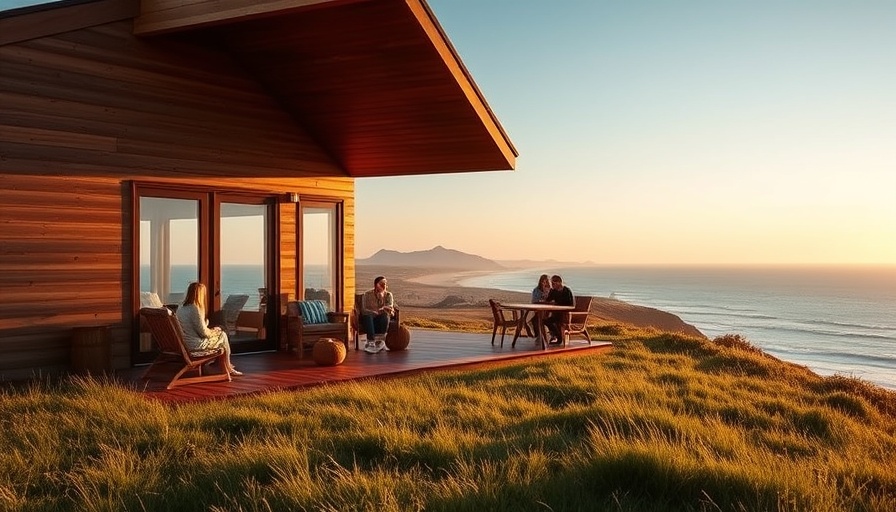
Celebrating Tasmania's Architectural Excellence
The Tasmanian Architecture Awards 2025 have unveiled this year's outstanding architectural works, showcasing the creativity and innovative spirit that defines Tasmania's evolving landscape. With awards spanning across 17 categories, the recognition extends from residential to commercial architecture, emphasizing the diverse talents within the local community.
Notable Winners and Their Unique Designs
Among the standout projects, Lara Maeseele's Nebraska on Bruny Island was awarded the prestigious prize for Residential Architecture Houses (New). The jury praised this coastal home as an “exemplary” example that balances spacious accommodations with an efficient design. Impressively integrated into its surroundings, Nebraska offers not just a beautiful structure, but a retreat that enhances the experience of place.
The Residential Houses (Alterations and Additions) award went to Preston Lane’s Jordan House, which exemplifies harmony between the new and the old. The jury highlighted how the addition respects the original heritage structure while bringing modernity and light into the home.
Commercial Architecture Achievements
Equally impressive were the commercial architecture winners. The Tolpuddle Tasting Room by Tanner Architects received accolades for its architectural sophistication blended with agricultural authenticity, proving that thoughtful design can be achieved even with a modest budget. This project also won the EmAGN Project Award, showcasing how strategic choices can lead to remarkable outcomes.
Additionally, the St Lukes Building by Terroir received recognition for its innovative use of local plantation timber, setting a benchmark in sustainable commercial architecture. This commitment to sustainable practices highlights the evolving landscape of architecture, where future-focused designs are becoming the norm.
A Broader Conversation on Architecture
Sarah Lindsay, jury chair for the awards, noted that the projects sparked profound conversations regarding contemporary issues in architecture. Topics such as sustainable forestry practices and trauma-informed design were at the forefront, emphasizing how architecture can address societal challenges.
These discussions remind property buyers, particularly in Tasmania and beyond, of the profound impact thoughtful architecture can have on communities. As potential homeowners or investors embark on their property journeys, understanding these elements can offer insights into what makes a property truly valuable.
What This Means for the Real Estate Market
The recognition of such architectural excellence could influence the real estate market in Tasmania. Increased interest in beautifully designed homes that are also environmentally responsible may shape future investments. A focus on sustainability could attract buyers who prioritize ecological considerations, ultimately driving up property prices in these areas.
For consumers scouting the property market, whether considering buying in Newcastle or elsewhere, noting these architectural trends can provide a distinct advantage. Properties that embrace innovative designs while adhering to sustainable practices may not only stand out but could represent better long-term investments.
Conclusion: The Importance of Architecture in Real Estate
As the architectural narrative in Tasmania unfolds, it stands as a testament to how local initiatives can redefine communities. For prospective buyers and investors, understanding these nuances between architecture and real estate value can help navigate decisions in the ever-changing property market. Stay informed about architectural trends to make the most informed choices in property investments.
So, whether you’re looking for houses for sale in Newcastle or seeking investment property opportunities, let the architectural merits of a potential home guide your decisions.
 Add Row
Add Row  Add
Add 




 Add Row
Add Row  Add
Add 

Write A Comment